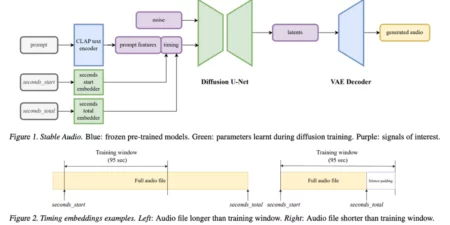If I talk about the woodwind family, the flute and recorder are very close relatives of this family. Still, there are differences in their features when we do a flute vs recorder comparison. Are you also confused between these two relaxing musical instruments? Don’t worry; you will find your answer here.
Some people think they are the same and have the same sound, but that is not true. For some strange reason, the flute and recorder seem confusing to most people. Flute and recorder may seem like the same instrument, but they are different from each other and have different sound qualities.
If you are also curious about the similarities and differences between the flute and recorder, then I’m going to cover all those points that are confusing for you. Let’s get into the details:
What is A Flute?
The term “flute” does not indicate only one musical instrument. The fact is flute also belongs to the woodwind family itself. The only difference between them is they are all reedless. In this modern age, the term flute indicates the western concert flute.
Various flute types are famous worldwide, like the Alto Flute, Piccolo, Dizi, Bansuri, Pan flute, and Bass flute. They are prevalent in various parts of the world, and people love to enjoy them.

Complete Guide: How Much is A Flute Cost?
Most people play flutes sideways; it is called transverse or side-blown flutes. There are also end-blown flutes that people play traditionally and vertically. When a person blows the air into the flute, the sound produces. The sound changes when a flutist opens and closes the flute’s various holes.
If you want to enjoy a flute, do not focus on its material; focus on its size and shape. The flute is the oldest musical instrument in the world, which has been around since 40,000 years ago. With time, people know its worth and start using it in traditional folk and classical music.
Related Post: Best Flutes for Beginners Review
What is A Recorder?
A recorder is also a type of flute, but it has a mouthpiece attached to it. It belongs to the fipple flutes or duct flute family. A flutist plays this recorder vertically, as its mouthpiece locates at the top. The flute sounds like a whistle when a flutist plays the recorder.
A person has to blow air into the recorder’s opening; as a result, a sweet and relaxing sound comes out of the recorder that feels so sharp. There is a wide variety of recorders, so their sound range depends on their size. Today’s most used recorders are Bass, Alto, Tenor, and Soprano.

In the Middle Ages, people used old traditional recorders, but with time they changed a lot of shapes and sizes. The recorder we know in this era is much different from the previous ones. That is the main reason the real and good quality recorders play only European music.
What Are the Flute and Recorder Similarities?
While comparing, flutes and recorders have many things in common. They both belong to the same spectrum of the musical family—flute and recorder are both the source of producing sweet and relaxing sounds. Both sounds might be similar for an untrained air, and he cannot find a difference between them.
Flutes and recorders are being used heavily in all classical music. But many countries, like China, Japan, India, etc., like to play flute in their traditional folk songs or music. The flute is an older instrument with the same lineage as the recorder. The way of producing sound with both instruments is also the same.

Flute and recorder instruments are similar in aerodynamics, design, and how they both produce sound by flowing the air into the opening. That air flows throughout the flute and recorder’s body and bending. Another similarity is the fingering movement to change the sound in both instruments; that is why many teachers said that learning one instrument from them is a pathway to the other.
What Are the Differences Between a Flute and A Recorder?
There are differences between both instruments because they are not the same instrument as people think. Let’s look at the differences between both musical instruments:

1) Shape
The first difference that you will notice at first sight is their shape. Even if their features are not distinguished, their shape is noticeable. The person who designed the flutes built his flutes with a tapered shape like today’s recorders.
Boehm, the musician who tried this feature, concluded that this feature gave him a Brassy sound. So, the inventor changed its appearance to avoid the overtone issue and give it a whistle-like sound. This design made the flute a better response in all octaves.
2) Position
The position is another difference in both instruments. When discussing the blowing mechanism, the instruments must follow and respect the airflow’s orientation. It raises the issue of ergonomic concerns. The perfect example is the contrabass flute; its blowing system is similar to the concert flutes. The airflow altered in them travels in the vertical loop after the horizontal loop.
3) Production and Tessitura
Another main difference between the flute and recorder is their sound. In the flute, the sound produces by blowing the air through the mouth hole to activate the air in the tube. It has an effective range of over three octaves. The main difference of this instrument is the sound is controlled in it by the flutist’s lips.
On the other hand, recorders have a very limited range; they have a limit of two octaves. Compared to flute and recorder, most flutists prefer to enjoy the recorders because they produce a very sweet and melodic sound. Playing and producing sound in a recorder is easy and simple, unlike the flute.
Native American Flute Vs Recorder
If you wonder are the native American flute and the recorder is the same instruments, the answer is no, they are not. They are different instruments, just like simple flute and recorder, but there are also some similarities. If I talk about the sound quality, the sound of the native American flute is much better than the recorder.

Native American flute sound is very mellow and soft; it touches the heart. On the other hand, the recorder has a little sharper sound. When you play the Native American flute, the sound is not loud as a Clarinet or a trumpet. Both instruments have some similarities but do not mean they are similar; they are different musical instruments with different sound qualities.
Pentatonic Flute Vs Recorder
Pentatonic flutes have been with us for several years; their natural and easy-to-play qualities have gained much popularity in the musical industry. The pentatonic means a scale that has five notes in an octave. It has the same notes as another with double frequency, but its one pitch is higher. There are five basic holes in the pentatonic flute, from which one is for every note.
So, as you know, the recorder has three octaves of sound, but the pentatonic flute is a flute of five octaves. So, besides their appearance, some differences make them different. One main difference is that they have different sound qualities.
Is Recorder Easier Than Flute?
Yes, the recorder is easier to play than the flute. The flute requires a lot of energy to play and produce sound. On the other side, the recorder does not need that to produce a sweet and melodic sound. There are more requirements of trial and error in the flute to play sound. It is not saying that the flute is harder to play sound, but comparing them, both concluded that a recorder is easy to play than a flute.
The recorder is a very easy instrument to learn music. There are many schools where teachers start making children learn to play the recorder early because of its easiness. After putting little effort, it is best to enjoy recorded music. Its beak and mouthpiece are more stable and comfortable for blowing air than the flute.
Comparing them, both concluded that the flutes have much better dynamic control than the recorders. Recorders are quieter, but the sound of the flute depends on the flutists. Flutes have a wide pitch range so that you can control the sound range. You can play them with 3-octave ranges; on the other hand, recorders only have 2 octaves.
No, they do not sound the same because the flute has a wide range of sound, around 3 octaves, while recorders play with the 2-octave sound range. The lowest note of the recorder is C5, while the flute has the lowest note, C4.
Yes, sometimes the recorder flutists play flute music, but it might go a little too high for the recorders and will feel not too good. So, it is good to play the sound native for your specific instrument.
In the 18th century, the flute took the recorder’s position when the perceptions changed. The social and cultural reputations, musical treatments, and technological developments illustrate those perceptions, and people start using flutes instead of recorders.
A recorder is a serious instrument with a rich history of ancient times. The plastic recorder was the first one people used in the old times. Its material and shape change with time, but it still represents a serious instrument representing history and culture.
If you were confused between the flute and recorder, I hope this article helped you know the differences and similarities between both instruments. Keep visiting us for more information.
Conclusion





